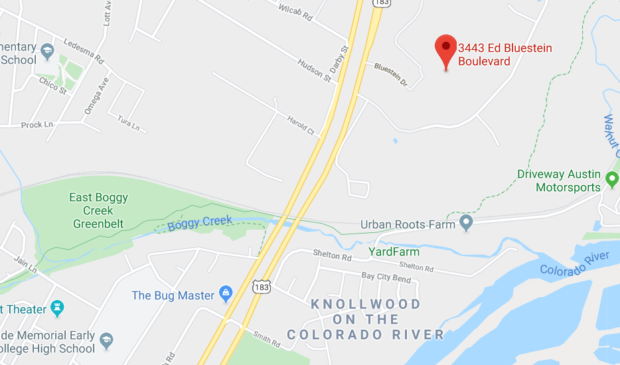Planning Commission supports request for 400-foot buildings in East Austin
Tuesday, January 21, 2020 by
Jessi Devenyns There are not many places in the city where buildings tower 400 feet into the sky. However, there is a chance that the areas of Austin where these skyscrapers are permitted are about to expand.
In a 9-0-1 vote, the Planning Commission recommended the approval of a planned development area combining district on the site of the old Freescale/Motorola Campus at 3443 Ed Bluestein Blvd. Under the proposed development plan, five buildings fronting U.S. Highway 183 will be built up to 400 feet in height. The rest of the development will be dotted with 14 existing buildings that are intended to be remodeled and used for a variety of tech-centric businesses in addition to retail, restaurants and art space.
Commissioners voted to recommend the zoning change from Limited Industrial Services with a neighborhood plan (LI-NP) to Limited Industrial Services with a planned development area combining district and a neighborhood plan (LI-PDA-NP) with the condition that the developer not exceed 60 percent impervious cover on the gross site area.
The extra height will allow for the 109-acre site to house 4.7 million square feet of mixed-use development without encroaching further into the green space on the site. Currently, the site has 35 percent impervious cover.
“The only places that we have 400-foot buildings is downtown,” said Heather Chaffin with the Planning and Zoning Department. “This would be a huge shift to go to 400 feet at this location.” Staff recommended approval of the project with the condition that the buildings do not exceed 120 feet in height.
Terrence Irion, who was representing the developer of the property, told commissioners “the height really is important to us because we really don’t want to cover the entire property with buildings.”
While commissioners were in favor of extending the allowable height for several of the buildings, they agreed there needed to be a trade-off in the reduction of impervious cover. Under the current commercial zoning for the tract, the developers are allowed to build up to 80 percent impervious cover.
Commissioner James Shieh explained the proposed compromise in a few words. “What guarantees us that green is going to stay?” he asked.
While the developers did not commit to any final number for impervious cover on the site, Irion did say, “I would think we probably wouldn’t add more than another 25 percent.” Although the developer anticipates an increase in impervious cover, designers will distribute that supplemental surface area to buildings rather than surface parking. Additionally, much of the surface parking that currently exists on the site will be removed in favor of underground parking garages.
While limiting overall impervious cover is appropriate when a project comes in as a planned unit development, Chaffin told the commission that for this case, “We cannot require anything superior.”
Adam Zarafshani, the developer on the project, told the commission he was willing to limit the impervious cover on-site to 70 percent. Since there is not yet a site plan, Zarafshani explained that the team has not calculated how many square feet of impervious cover will be necessary to allocate to office space, retail and parking to make the economics of the project work.
For the community and the commissioners, the swaths of green space on the campus are a large component of what makes the development such an appealing prospect.
Angela Garza, a member of the community, told commissioners “they’re not trying to destroy the nature.” Instead, she says that the preliminary plans are “beautiful” and have widespread support from the community.
“I believe this is really an opportunity,” said Commissioner Patrick Howard. “I think this is truly an appropriate location.”
Nine other commissioners agreed that this project was appropriate for this location and recommended it for approval. Commissioner Shieh abstained from the vote and commissioners Awais Azhar, Patricia Seeger and Claire Hempel were absent from the discussion.
Map courtesy of Google Maps.
The Austin Monitor’s work is made possible by donations from the community. Though our reporting covers donors from time to time, we are careful to keep business and editorial efforts separate while maintaining transparency. A complete list of donors is available here, and our code of ethics is explained here.
You're a community leader
And we’re honored you look to us for serious, in-depth news. You know a strong community needs local and dedicated watchdog reporting. We’re here for you and that won’t change. Now will you take the powerful next step and support our nonprofit news organization?










